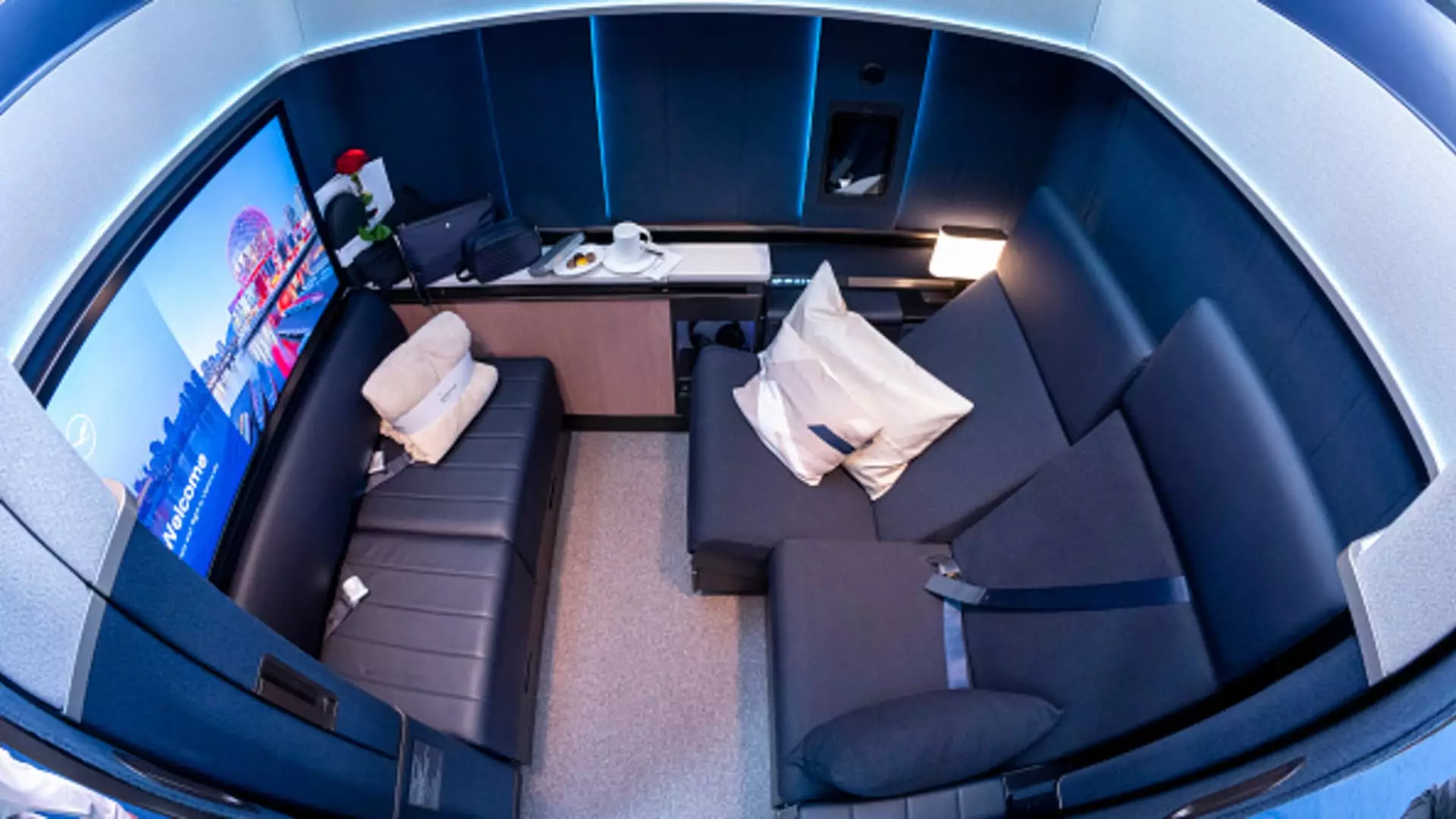The aviation industry is undergoing a significant transformation, particularly within the segments of first-class and business-class air travel. Airlines and manufacturers are vying for an edge in the competitive market by investing more into passenger comfort and luxury innovations. From heated and cooled seats to ultra-high-definition screens and private doors, these features are designed to create a uniquely upscale travel experience. However, the introduction of these innovations has been met with delays as manufacturers confront numerous regulatory and logistical challenges, raising questions about the interplay between luxury and practicality in air travel.
Airlines are striving to captivate high-paying customers by enhancing cabin experiences that go beyond basic amenities. For instance, Boeing’s 787 Dreamliner is at the forefront of this race, brimming with features intended to attract more affluent travelers. Yet, these enhancements come with complications, as cockpit configurations and seat designs demand rigorous regulatory approvals. Despite the promise they hold, these luxurious offerings are frequently mired in red tape, jeopardizing timely deliveries and creating cascading effects throughout the industry.
One significant concern shared by both Boeing and its primary competitor, Airbus, is the time-consuming nature of obtaining necessary certifications. Specifications for more extravagant seating arrangements often extend beyond the actual seats themselves; ancillary elements like cabinetry and privacy features also need regulatory endorsement. The complexity surrounding these components tends to delay the entire assembly and delivery process, prolonging wait times for both aircraft manufacturers and airlines.
Understanding the nature of these delays requires digging deeper into the regulatory framework that governs air travel. Airlines and aircraft manufacturers must adhere to stringent rules to ensure passenger safety, particularly when dramatic upgrades to seating and cabin layouts are in play. This necessity for compliance creates bottlenecks that inhibit the prompt delivery of new aircraft. Recent personnel cuts within agencies like the Federal Aviation Administration (FAA) have compounded these challenges, leading to concerns that a lack of regulatory personnel could stifle new aircraft certifications even further.
This situation is particularly dire, given the financial stakes involved. Many airlines rely on timely aircraft deliveries to generate significant revenue, as airlines typically pay substantial amounts upon receiving a new plane rather than at the time of order. Continued delays not only limit airlines’ growth potential but also restrict their ability to modernize fleets, ultimately affecting customer satisfaction in a crucial period for the industry.
The evolving landscape of air travel has revealed a marked shift in consumer preferences, particularly in the wake of the Covid-19 pandemic. Airlines increasingly recognize that premium travel options can yield higher returns in an industry where the full fare for economy seats pales in comparison to the expense of first-class or business-class accommodations. For instance, airlines such as Delta have reported that a substantial proportion of their revenue now derives from premium seating, reflecting how the balance of economic importance has shifted in their favor.
These new business-class seats can carry design costs in the low-six-digit range, comparable to that of a luxury automobile. Yet, the airlines assert that the investment is justified, as there is a clear inclination among customers to allocate more of their travel budgets toward enhanced experiences. Brands like Delta and Qantas are committed to upgrading their cabin configurations, yet these plans are often hampered by supply chain constraints that mirror broader industry challenges.
Globally, airlines are aligning themselves with ambitious upgrades aimed at meeting the shifting demand for opulence among travelers. Companies such as Lufthansa and Singapore Airlines are on the brink of introducing their high-end offerings, but they too find their plans delayed due to the same systemic hurdles that plague their counterparts.
As airlines navigate these complexities, it becomes increasingly critical to consider how deeply intertwined the future of air travel is with notions of luxury. It will ultimately be essential to balance the enhancements that enhance passenger experiences with the practical requirements of timely delivery and regulatory compliance. In a climate of evolving consumer expectations and infrastructural challenges, the commitment to delivering high-quality air travel remains as crucial as ever. The race to offer top-notch comfort is fraught with delays and complications, illustrating the paradox of chasing luxury while contending with the realities of supply chains and regulatory frameworks. The industry is at an inflection point, where creativity and practicality must coalesce to redefine what luxury means in commercial aviation.

